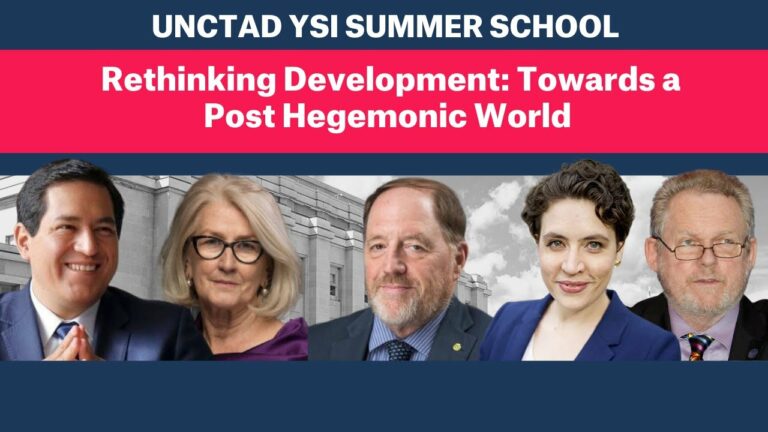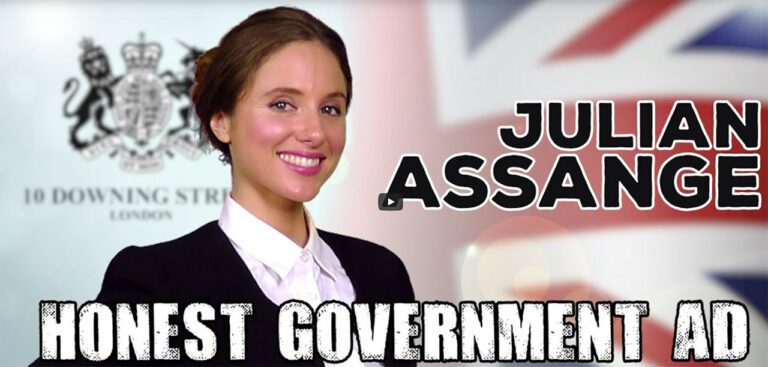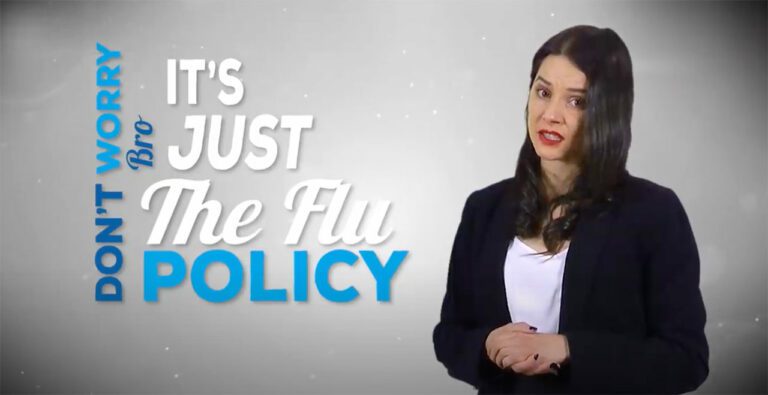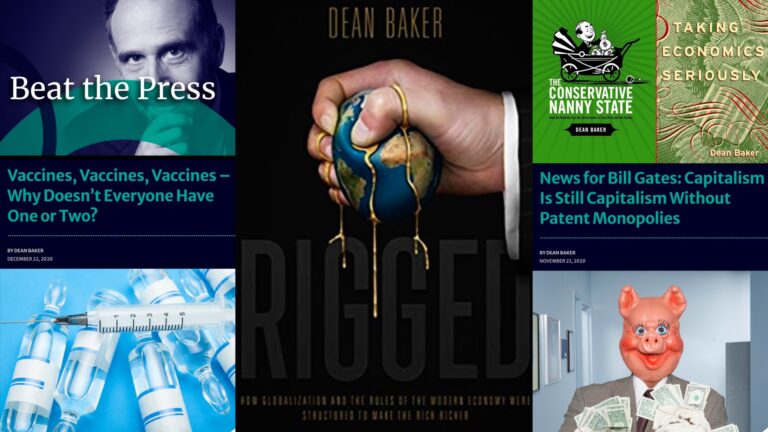In dealing with the Covid economic crisis, governments must not repeat the strategy of the last crisis, where the withdrawal of fiscal stimulus adversely impacted growth, the continuation of quantitative easing, and low-interest rates propelled asset prices ever higher. It led to a combination of high inequality, financial fragility, huge amounts of debt, and growing anxiety everywhere.
Paul Jay
Hi, I’m Paul Jay and welcome to theAnalysis.news podcast. Don’t forget, if you like these
podcasts, you could show us by hitting the donate button if you haven’t already.
So this is the second part of our interview talking about the United Nations Conference on
Trade and Development, that’s UNCTAD and its 2020 report titled ‘From Global Pandemic to
Prosperity For All: Avoiding Another Lost Decade’.
Now joining us again from Geneva to discuss the report is its principal author, Richard
Kozul-Wright. He’s the Director of the Division on Globalization and Development Strategies
at UNCTAD. He’s also the author of ‘Transforming Economies: Making Industrial Policy
Work for Growth, Jobs, and Development’. And if you haven’t listened to or watched part
one, I suggest you go back to part one because this will make part two make more sense.
Thanks for joining us, Richard.
Richard Kozul-Wright
Good to be back, Paul.
Paul Jay
I’m going to just quote a section and then we’ll talk about it and then I’ll quote another
section. We’ll talk about it.
So in a part which headline is ‘Look Back in Anger,’ you write, Government, and we’re talking
since the 07/08 crisis, “government spending did increase, but the programs targeted large
firms and financial institutions, not workers, homeowners, and local communities”. You’re
talking to a large extent about the Fed, although I suppose this applies to some of the
European governments as well.
The argument is that people who defend how that money was spent, and I’m not sure we
actually know what proportion went essentially to prop up the stock market and the value of
assets and how much actually got into the pockets of ordinary people, but certainly a large
part and maybe the lion’s share went towards large firms and
financial institutions. At any rate, the argument for doing that is that if you didn’t do that, then
large firms and financial institutions might have collapsed causing a mass amount of
bankruptcy, which would have caused so much economic dislocation, that it would have hurt
workers, homeowners and local communities even more. So what do you make of that?
Richard Kozul-Wright
Part of what we’re trying to do in this report is to hold up the experience after the global
financial crisis as a warning. We’re all talking about recovering better or building back better,
I think is the slogan in political circles.
Paul Jay
Biden’s slogan.
Richard Kozul-Wright
Yeah, exactly. People forget that Gordon Brown and Obama and the people who
congregated in London in April 2009, had much the same rhetoric. The plan that they
hatched in London was pretty progressive. They made a promise to put a priority on jobs.
They would reregulate finance so that the excesses didn’t happen again. They would keep
trade flowing. There’d be a focus on innovation. I mean, a lot of the things that we’re hearing
now we’re very much up-front and center.
Paul Jay
This is when?
Richard Kozul-Wright
In 2009. The G20, Gordon Brown talked about a new Bretton Woods. Nicolas Sarkozy
talked about a new international economic order. In comparison with today, one could argue
that these seem like heavyweight politicals compared with what we have today.
So there was a real expectation back in 2009 that there would be fundamental changes to
the rules of the game. It proved to be very ephemeral. Once financial markets regained their
poise and central bank balance sheets were put into some kind of order. We know that the
default adjustment strategy was austerity. All the talk that has thrown all this money at the
problem, we now have to bite the bullet and behave like a responsible household and put
our own finances in order. This notion of expansionary austerity has a grip on the minds of
some academics, academic economists, and policymakers. In that fact found became the
kind of policy wisdom of the day.
So we wanted to tell that story again, just as a reminder. But we have heard all this stuff
before and we saw the consequences and the consequences were that this combination
essentially of fiscal tightening, very easy monetary policy, and free trade agreements of one
kind or another, was the kind of package that eventually came to dominate policy circles
from 2010 and that didn’t work. What we got was increasing inequality, wage stagnation at
for the majority, a financial asset bubble driven by these huge surges of liquidity at the top.
It led to a combination of high inequality, growing inequality, financial fragility, huge amounts
of debt, and growing anxiety everywhere. That was the environment that bred these political
shifts in 2016, 2017, that we all know about, and left the global economy at the end of the
decade in a fairly perilous state. The world economy was slowing down in 2019. The
Investment was slowing down. The effect of the Trump tax cuts was wearing off.
Back in our report last year, we said the world economy could very well easily be tipped into
a recession. If there is some unexpected shock that hurts the major economies. We didn’t
expect COVID-19, obviously, but there were lots of talks then about the China-US trade
spats. There were worries about currency wars. There was the problem of huge amounts of
corporate debt that were looking increasingly fragile. So there were lots of potential
flashpoints already at the end of 2019 and against this backdrop of a global economy that
had not recovered better despite all the promises in 2009. We worry that maybe the route
that we come out of COVID-19.
Paul Jay
I’ll read another quote from the report: “While the withdrawal of fiscal stimulus adversely
impacted growth, the continuation of quantitative easing and low-interest rates propelled
asset prices ever higher. At the same time, a combination of corporate rent-seeking and
cheap credit in the context of weak demand, reinforce the culture of quick financial returns
with private equity, outsourcing, share buybacks, and mergers and acquisitions the
instruments of choice. To take a startling example, between 2010 and 2019, the S&P 500
companies channeled almost a trillion dollars a year into share buybacks and dividend
payments”.
So let’s break this down. So, first of all, for people that don’t understand how quantitative
easing actually worked, and so on, and why low-interest rates propelled asset prices. So
let’s just say asset prices are like the stock market and what else, so break that sentence
down.
Richard Kozul-Wright
Houses and the housing market is another one. We got the rise of private equity emerging
over this decade. On the basis of liquidity that was not spilling into supporting productive
investment in the economy, it wasn’t driving some sort of strong wage growth. But it had to
go somewhere. And most of it leaked into financial assets of one kind or another.
Paul Jay
And by liquidity you mean, money that was almost free to the banks from the Fed. The
interest rate was so low it was like free money.
Richard Kozul-Wright
Yeah and in some cases turned negative.
Paul Jay
What does that mean, they turned negative?
Richard Kozul-Wright
If you paid less in the end if you were issuing a bond, you paid less. But you bought it back
in 10 years’ time for less than the issuing price.
Paul Jay
This was all supposed to put more money into the system, which would supposedly give
more growth and more employment. Except that isn’t what happened.
Richard Kozul-Wright
The first real experiment of this had occurred a decade earlier, with the response of the Fed,
to the Dot-com crisis. In response to that, the Fed opened up the money tap. You initially got
an increase in house prices. You also got, which had an important impact on developing
countries, you got some of that money moving into commodities. So commodities became
an asset class.
Paul Jay
Like food.
Richard Kozul-Wright
Yeah. That was a feature of the run-up to the financial crisis and actually continued beyond
the financial crisis of asset prices, commodity prices actually did rise after the financial crisis,
which is why some developing countries worked themselves through the shock of the crisis
better than many people expected and better than many advanced economies. Now that
collapsed in 2014, 2015 commodity prices, because it wasn’t driven by fundamentals, if you
like supply and demand, it was driven very heavily by financial transactions. As investors got
nervous we had a collapse in commodity prices in 2014, 2015, with some pretty damaging
consequences for many developing countries that they’re still living through.
We saw that on the monetary side of the economy, as austerity was squeezing the real side
of the economy over the course of the last decade. They played off each other, which is why
we had a very long recovery after 2009. I think one of the longest recoveries of positive
quarterly growth on record. It was very weak and ephemeral. You’d get a kind of surge and
there was a talk that somehow we’d finally broken out of this new normal into more rapid and
sustained growth. Then sentiment would shift and growth would dip again. So it was a very
long, but weak recovery, essentially.
Paul Jay
Just to be clear, when we talk about austerity you write “this is little more than a
euphemism for a weakening social safety net and keeping wages used in check,” you could
also say low. But let’s break down this issue of stock buybacks, because it’s a very important
feature that rarely gets talked about except on Bloomberg Business Radio and in the
financial press. But in terms of ordinary people, my guess is most people have never even
heard of stock buybacks. And it used to be illegal. I’m not sure it was under Reagan or
Clinton that they allowed companies to buy back their own shares. But it was illegal because
it was creating a false stock price. Companies could simply artificially raise the value of their
stock, by buying their own stock, creating a demand, where it might not have been
otherwise. And then it becomes legal, and it’s a free for all, borrowing cheap money from the
Fed, and elsewhere, and then buying their own stock, creating massive amounts of
corporate debt.
I mean, Apple was borrowing money to buy its own stock. At the same time, Apple had a
mountain of cash on hand. And creating this artificial stock market and large amounts of
corporate debt.
If I understand correctly, this new stimulus money, the care package or whatever that came
out after COVID, and the large amount of the money that went to corporations, they used to
pay down debt, debt that came from borrowing money to buy their own stock, which was
essentially a scam in the first place.
Richard Kozul-Wright
I don’t think the worry is so much with some of these massive corporations, as you say, is
sitting on themselves with huge amounts of cash. A lot of more medium-sized companies
engaged in this before the COVID-19 crisis hit, and now you got all this talk about zombie
companies that were essentially kept going on the basis; it’s a kind of Ponzi financing
scheme of some kind, that was kept going because they still had access to very cheap
sources of lending and borrowing.
That’s somehow linked to the whole rise of shareholder value. This shift in corporate
strategy, which we’ve written about before in previous TDRs, linked to this financialization of
the economy, where quarterly returns become a far more important metric for judging the
success of companies, than long term strategic value and the kind of quality of the product
and the labor force that is employed.
This kind of financialization of the corporate sector clearly predates COVID-19. It predates, I
think, the 2009 crisis. But underneath it has been this huge accumulation of corporate debt.
A lot of the problem with the discussion of debt is that everyone instinctively focuses on the
debt of the public sector, but the rise of debt in this era of hyper-globalization has been
dominated by the rise of private debt, both household, corporate and financial institutions,
borrowing huge amounts of money from each other.
Paul Jay
You’re right. There are growing concerns that the massive relief packages in response to the
crisis, will keep many large and destined to fail firms going. Even as viable smaller
businesses are starved of funds and again transferring dangerous risks from the private to
the public balance sheet.
Richard Kozul-Wright
I mean, I think you probably know better than I do, but I think this has been a criticism of the
CARES Act, right? There were certain credit lines that had been designed to support small
businesses. And it turned out that a lot of that money was being channeled into much larger
corporations. I think some of them actually had to give it back at some point when that
became public.
It’s not something that we’ve examined in great detail, the distribution of the money under
the CARES Act. What you read, is that it’s been highly skewed in favor of the big players
and the worry that is coming out of COVID-19, that these problems that were left
unaddressed after the 2009 crisis, the problems of excessive amounts of debt, the problems
of rising inequality, the problems of financial fragility, and this growing power of large
corporations with digital firms being somehow kind of typical of this. That these pre-existing
conditions, if you like, are going to actually be exaggerated by many of the features of the
COVID-19 shock.
Paul Jay
You write, “Economists refer to the transfer of private risk to the general public as a moral
hazard, the privatization of profits and the socialization of losses and an inevitable corollary”.
Just before that you wrote, “The world did not prepare for the COVID-19 pandemic as well
as it could have. And the ethos that informed the response to the global financial crisis has
something to do with that failure. Epidemiological and economic warning signs have flashed
for years”.
What’s the connection between not preparing for the pandemic and this ethos of the financial
crisis?
Richard Kozul-Wright
This kind of rent-seeking capitalism, heavily financialized, has emerged over the last 25, 30
years really, is a highly predatory form of capitalism. That’s quite clear in the way that we’ve
examined it, in which the share of profits and overall income, has morphed over this period
and the share of wages in overall income has steadily and systematically declined over this
same period.
But underneath this are these very predatory types of rent-seeking behaviors that particularly
large, monopolistic or monopsonistic firms have been able to engage in, often with changes
in the legal structure that allows that to happen. I guess we don’t think it’s particularly
surprising that if you’re going to treat your own social communities in that way, that it’s not
surprising that you would treat the natural environment, also as essentially something to be
mined at will to enhance your bottom line. I guess that’s really what has been happening at
large, in large parts of the global economy.
To some extent, at least as people who know more about that than this, than we do,
suggest, this has been a breeding ground for these zoonotic diseases, of which, COVID-19
is proved to be one of the most troublesome, although not the most deadly, but certainly in
terms of its ability to spread has proved particularly damaging.
So there is a connection, it seems to us, between this kind of rent-seeking behavior, that has
become a feature of 21st-century capitalism and the destruction of the environment and
obviously from the climate breakdown, but has also bred these diseases that have become
increasingly common.
Paul Jay I don’t think we kind of really understand just how destructive to the global economy the
pandemic has been, I guess, because of the amount of money being pumped in by central
banks around the world.
But you write that “in wake of these shocks, the global economy will contract by an
estimated 4.3 percent this year, leaving global output by year’s end over 6 trillion short, in
current U.S. dollars, of what the economists had expected it to be before COVID-19
pathogen began to spread. In short, the world is grappling with the equivalent of a complete
wipeout of the Brazilian, Indian and Mexican economies”. Like that’s a big deal. But the stock
market more or less keeps going up.
Richard Kozul-Wright
Yeah, the estimated size of these packages for the G20 countries is in the order of 13 trillion
dollars. That money’s going somewhere and some of it is quite clearly spilling into interest
stock markets. Which is why we see this incredible disconnect between the financial markets
and a growing sense of anxiety amongst large parts of the population, who have already lost
their jobs or see their jobs becoming increasingly vulnerable as these packages begin to
wane, and are being thrown out of their houses as some of these rental schemes come to an
end.
There is this huge disconnect between the world of finance and the lives that most people
experience. Again, this is not a product of COVID-19. I think it’s very important to recognize
that this is something that has been working through the system now for decades. The
COVID-19 has exposed many of these problems and cast them in a very particular light,
given the extremity of the lockdown. This takes us back to this endless narrative that
frustrates us a little bit. The common explanation of this is to just say, well, unfortunately,
some people have been left behind. It’s a common refrain that we hear in the international
community that somehow we just forgot about certain people who were uneducated or didn’t
have the skills, etc.
That ignores the fact that the rules of the game of this hyper-globalized world, are actually
geared towards inequality as a modus operandi of the system. It’s how the system works. It’s
not an accident or forgetfulness that has led to these obscene levels of inequality. It’s how
the rules of the game are meant to play out. I’m trying to emphasize that if we don’t
recognize, that there’s something inherently wrong with the way in which the 21st-century
economic game is being played if we don’t recognize that, there’s no way that we can
recover better or build back better because you’re going to have to kind of tackle the
interests and the norms and the values that have emerged out of those, and alongside those
rules. If you’re going to create a more sustainable and inclusive outcome over the next
decade.
Paul Jay
The craziness of all this, the stock market continues to rise because of the Fed, and this has
repercussions around the world, but the Fed keeps buying bonds and even buying stocks
apparently, to make sure that the market doesn’t crash, but that it’s all built on this kind of
smoke and mirrors, to a large extent, of this public money propping up these assets. The
mentality is we’ll cash in on it today and not worry about tomorrow.
They once asked Marx to explain the psychology of a capitalist and his answer was “Après
Moi, le déluge”, quoting the French King, I forget which one it was, but after me come the
floods. And it seems to me, that’s where we’re at right now, in terms of the way the world
global economy is working. Although after me come the floods, the floods are also going to
be literal, the way they’re ignoring and denying the climate crisis. You put the denial of the
climate crisis and the denial of the economic crisis really, in the sense of how irrational the
global economy is working, and their mentality is, well we will make money today and
tomorrow can worry about itself.
Richard Kozul-Wright
It’s not debt per se that’s the problem. Credit is this kind of amazing instrument that has been
around for millennia, which is a necessary part of a dynamic economy.
It’s the fact that debt has become this highly privatized business, that keeps this semi
irrational system of endless financial transactions going. We would argue that what we need
to see moving forward is a huge increase in public investment to deal with these
preconditions that have been left, undealt with, after the global financial crisis. To get at the
problems of the climate breakdown of the inequality of decaying public services.
The only response to that is to be able to have a huge public investment drive into public
transport and the care economy and the green economy, etc. That will require an effective
and supportive credit system. The problem is that the credit system, as it currently operates
under the rules of the game, could perpetuate this highly financialized, highly unequal world,
which doesn’t generate the kind of stability and inclusiveness that at least the rhetoric of
building back better or recovering better suggest.
Paul Jay
And we’ll see. Right now it’s looking like a Biden presidency, even more, today than last
week or before the debate. Biden’s way ahead in the polls and I don’t see how this Trump
getting COVID helps his cause at all. But I guess what you’re saying is the issue is not
whether there’s public expenditure, although I think there could be some argument, that
instead of just debt, there could be more taxation of the wealthy to fund this public
expenditure. But maybe it’s not worth the political fight right now given the situation is so
urgent. But the problem is, what do you do with the public expenditure?
Is it actually going into infrastructure and other kinds of projects that also lead to higher
wages and more real demand in the economy or propping up asset prices? Right now, given
the way finance controls the politics, I guess we’ll see whether that strategy actually changes
or they just dress it up in another gown and it winds up, again, just propping up asset prices.
Richard Kozul-Wright I mean, I would still argue that there is actually a necessary and strong case for progressive
taxation. I think that at least in the modeling exercise that we present to you, there is an
important role for progressive taxation as underpinning this kind of agenda. But the
argument is that you can create this kind of virtuous circle, in which, public spending leads
through strong public investment to higher productivity growth. If you have to tie wages to
productivity growth to ensure that the wages are rising in line, that leads to an expanding tax
base that allows governments, if they have to borrow, to be able to service borrowing. This
idea of a virtuous circle that underpins this alternative to austerity and re-globalization, is
what we’re trying to get at in terms of the policy proposals in the report.
Paul Jay
OK, well, we’re going to end this session and we’ll pick it up again and we’re going to talk
about the next part of the report, which is almost in brackets everyone left behind and talking
about wages and some of those kinds of issues. Thanks very much for joining us, Richard.
Richard Kozul-Wright
Thanks for inviting me, Paul.
Paul Jay
And thank you for joining us on theAnalysis.news podcast.






